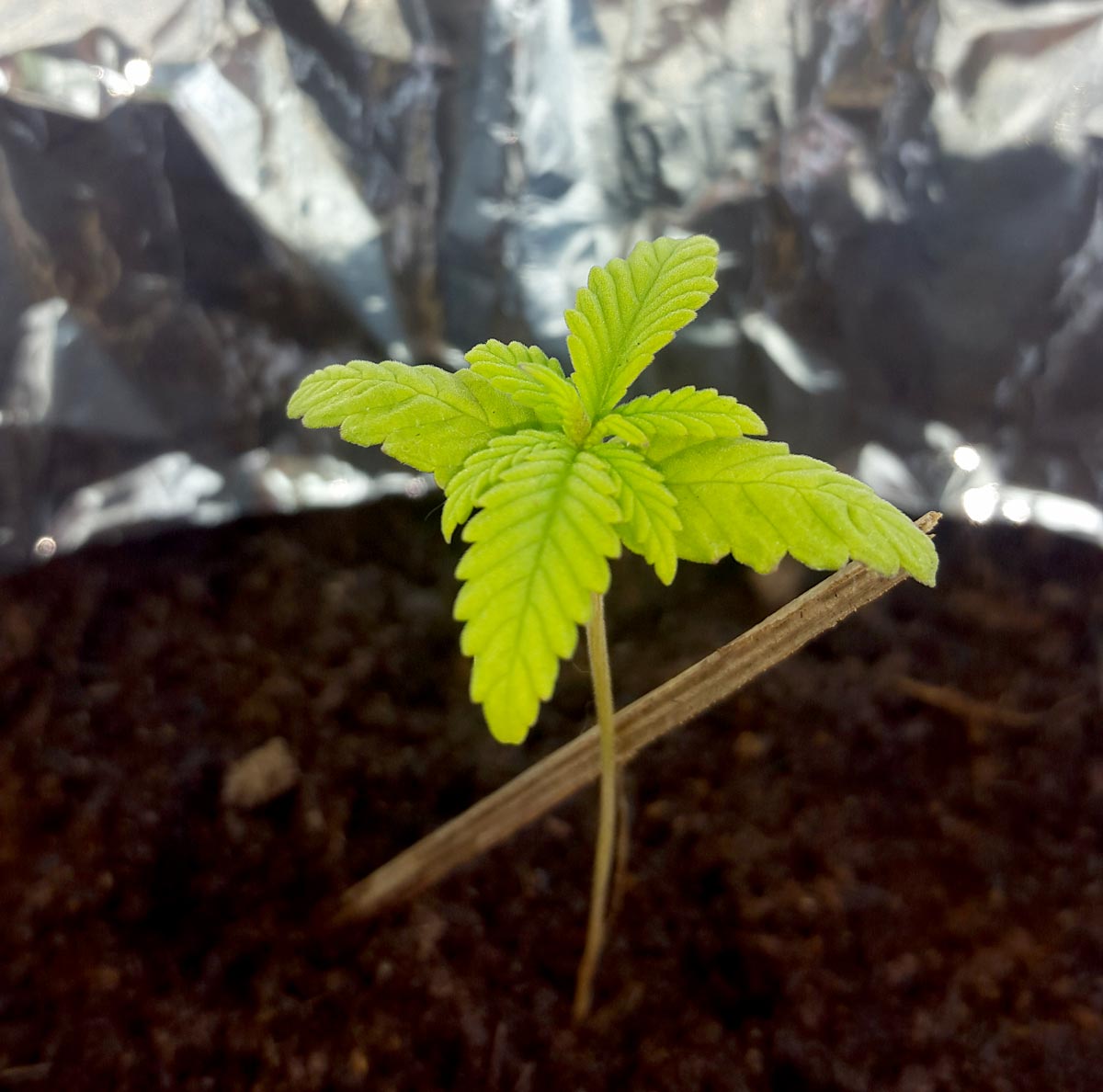Overwatering is one of the most common problems that cannabis growers encounter. We find out there are 5 surprising signs of overwatering, and the first one is the brown leaf edges we talked from the last blog. Read on to find out more signs:
2.) Yellowing or Bleaching
Overwatering prevents plants from conducting normal plant processes. A heavily overwatered cannabis plant (especially a young one) may start looking yellow all over from being overwatered. The yellowing can occur even when roots have access to nutrients and are given the right pH. Here is an example of an overwatered seedling that’s turned yellow all over.
Overwatering can also cause symptoms that look similar to light stress because you may see the top leaves close to the light are turning yellow. Although it looks like light stress (a sign the grow light is too close), the issue is actually that the plant isn’t able to move water and nutrients properly. The plant can’t keep up with the hardest-working leaves and they start turning yellow. If you know you’re keeping your grow lights the right distance away and are still seeing yellow top leaves, there’s a strong chance you’re actually dealing with a nutrient deficiency or a watering problem.
3.) Nutrient Deficiencies
Brown spots (leaf scorch) on leaves seems to be one of the more common symptoms of overwatering, yet this is commonly confused for a calcium deficiency. In addition to brown spots, it’s not uncommon to see other random deficiencies like potassium, copper, iron, phosphorus, etc.
Brown spots, burnt marks, and leaf scorch can be triggered by overwatering. These symptoms are commonly mistaken for a calcium deficiency, ph problem, or light stress. In the following case, the symptoms always got worse after watering. The leaves curling up at the ends is another clue that this may be the result of overwatering or root issues.
Some symptoms appeared the day after the plant was heavily watered. In addition to the brown patches in between the veins, notice how the serrated edges of the leaves have brown spots, too (a sign of overwatering we covered already). Some yellowing leaf veins look like a nutrient deficiency, but overwatering is the actual cause (the extreme drooping is a major clue). This seedling also looks like it’s dealing with a nutrient deficiency. However, the thick muddy grow medium and overall droopiness indicate the issue is actually overwatering.
4.) Cupping or Curling
Sometimes the symptoms look a bit like heat stress (tipped edges, curling up or down, etc.). Since overwatering is relatively common with heat, this can keep you focused on the temperature when you should also be paying attention to watering habits.
Sometimes the leaf tips of plants curl up, this may be the result of overwatering combined with cold. Cold temperatures make it more likely for plants to suffer from overwatering because plants don’t drink as much. You can tell the brown tips are not nutrient burn (though it looks similar) because the browning appears in between the veins instead of just on the very leaf tip. The issue was also localized instead of all over the plant. That lets you know you’re looking at a nutrient deficiency as opposed to nutrient burn. Since this plant was receiving perfect nutrients and pH, that narrowed the problem down to overwatering. Once the plant stopped getting watered so much at a time, the leaves started growing green and healthy.



